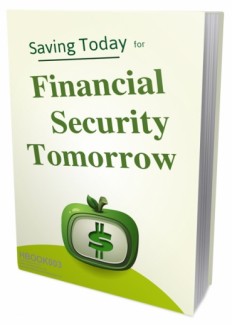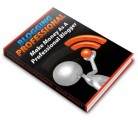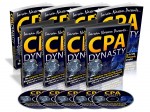
 License Type: Private Label Rights
License Type: Private Label Rights  File Size: 1,886 KB
File Size: 1,886 KB File Type: ZIP
File Type: ZIP
 SKU: 57637
SKU: 57637  Shipping: Online Download
Shipping: Online Download
Ebook Sample Content Preview:
Create a Budget
Creating (and sticking to) a reasonable budget is one of the first steps to becoming financially secure. Yes, it’s still possible to save money without a budget. But, you’ll typically find it much easier to save when you have at least a basic outline in place.
Track Your Spending Habits
Many people make the mistake of not tracking their income before they start to put together a budget. This makes the task almost impossible to accomplish. You have to know where your money goes in order to get a handle on your current spending habits. Once you do that, it's much simpler to create a money management plan that you can live with.
It's important to keep in mind that if you don't track your spending, what you're going to end up with is a "wish list" of how you want to spend your money. Unfortunately, it won't take you long to figure out that budgets don’t work that way and that worse yet, you haven’t accomplished anything at all.
Write It Down
Whether you choose to tackle your budget using an app or the old-fashioned way (with pen and paper), don't cut your expenses so much that you take all of the fun out of life. Make sure to earmark money for things like entertainment and occasional splurges. If you don't, you'll probably end up throwing your budget out the window in no time at all.
For example, if you love to eat out and do so quite frequently, don't give it up completely. Tell yourself you'll eat out once a week instead. Or as an alternative, try this. Do an online search, in effort to find copycat recipes of your favorite restaurant meals. You'll probably be surprised by how many are available if you just take the time to look.
What's the point, you ask. Well, when you make these dishes at home, you'll typically save money nine times out of ten. Add this savings to your piggy bank!
The best way to start tracking expenses is to make a list of major categories. Include things like:
* Rent/mortgage payments (also homeowners insurance, general household upkeep, etc.)
* Medical insurance
* Utilities (trash pick-up, water, cell phone, electricity, etc.)
* Car expenses (gas, insurance, car loan, etc.)
* Groceries
* School expenses (school lunches, tuition, fees to play sports, etc.)
* Entertainment
* Personal needs
* Work-related expenses (dues, etc.)
* Credit cards
This is by no means a complete list. Everyone's budget is going to be different. Take the time to think about everything that you're required to pay during a one-month time span. Place each entry under the proper category. Next, figure out how much you spend on each category, within that same 30-day period. If you have any unusual expenses, save time and simply put them under "miscellaneous." You can always go back and make adjustments later.
- File Size:1,886 KB
- License: Private Label Rights
- Category:Ebooks
- Tags:2016 Ebooks Private Label Rights







